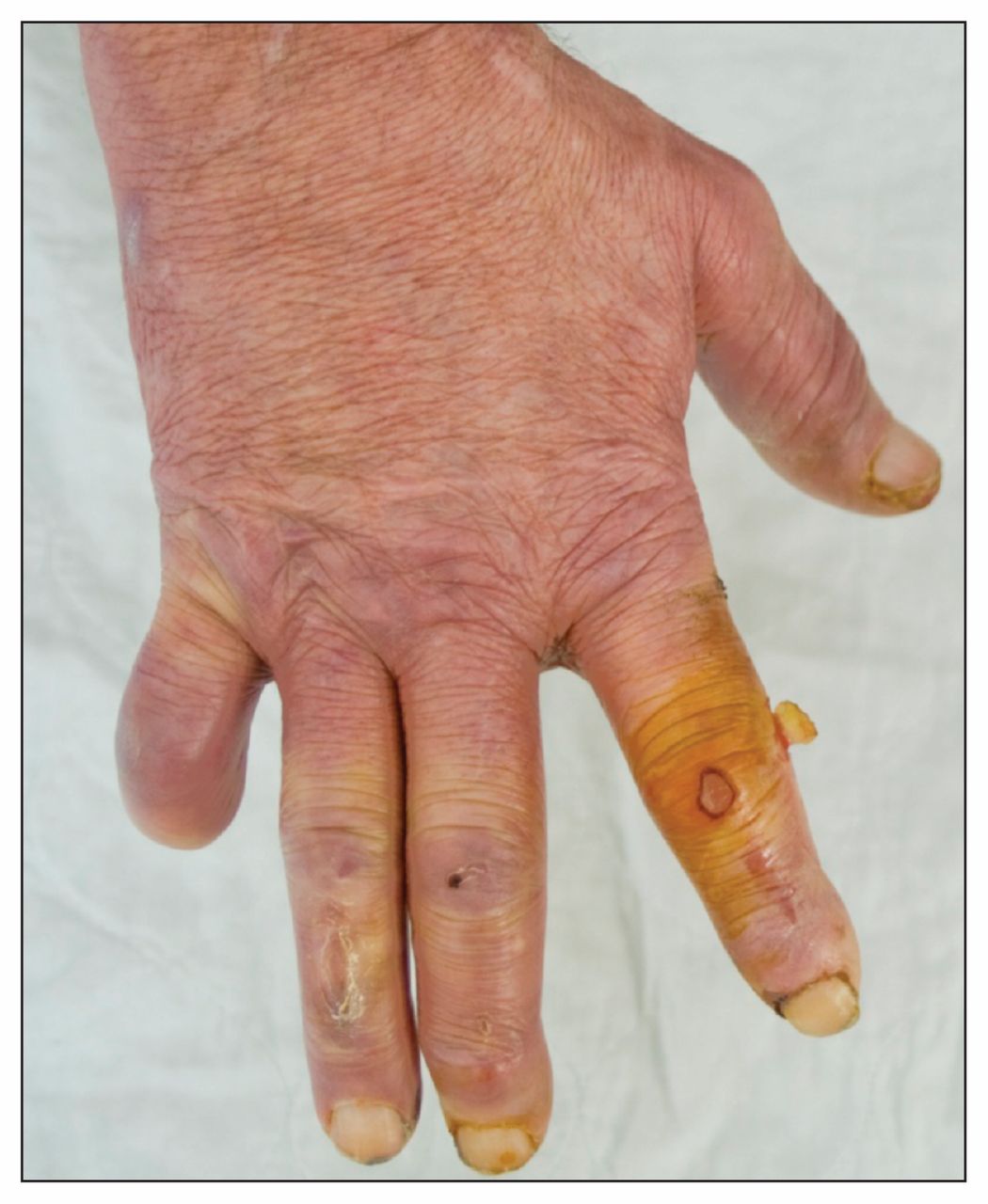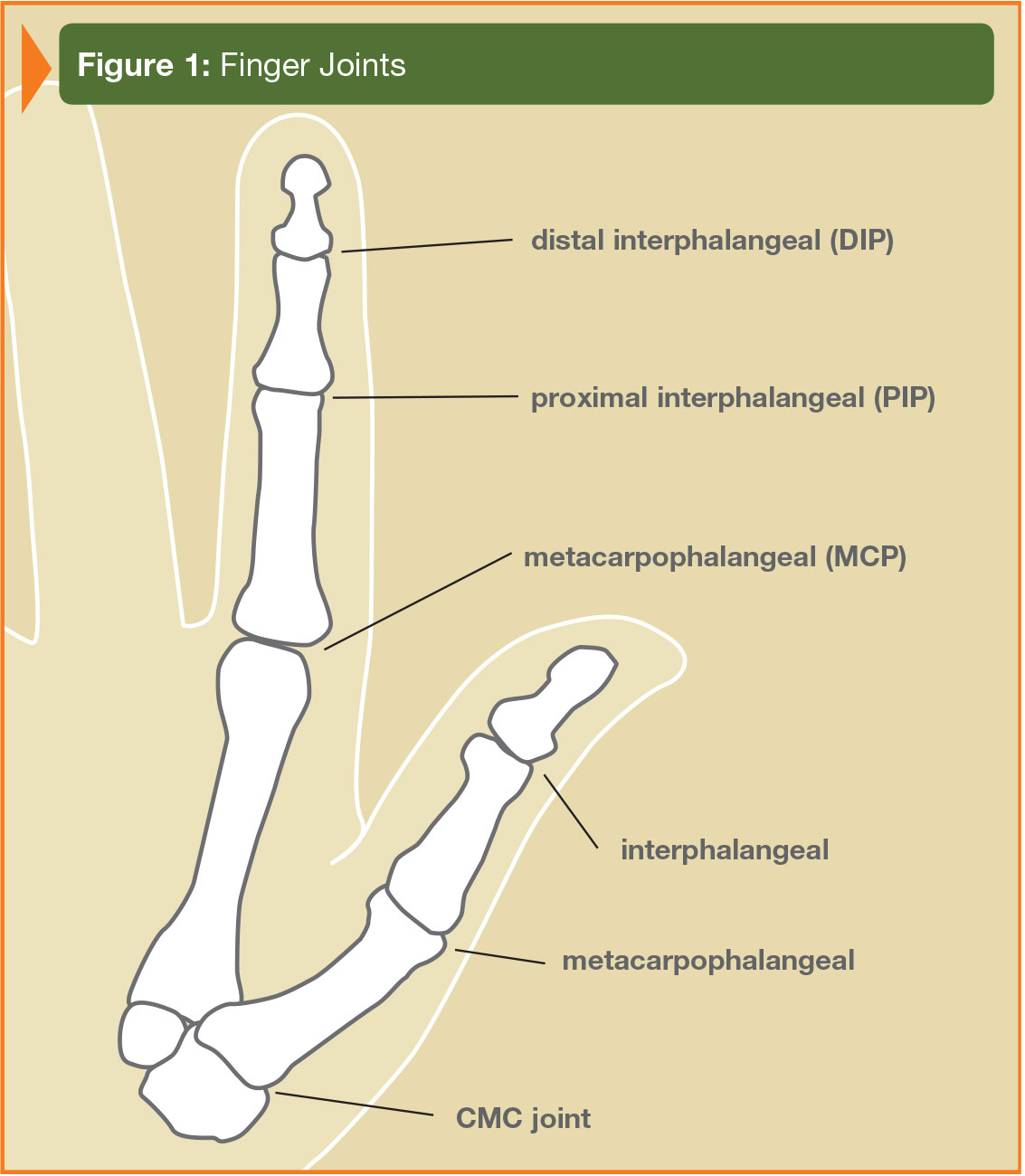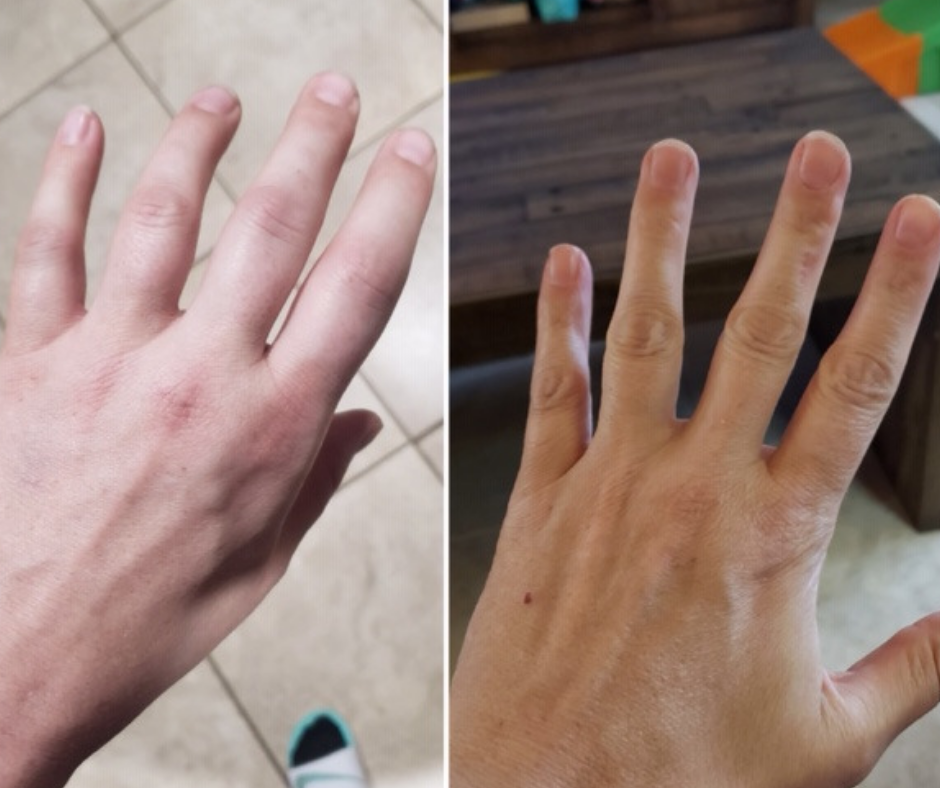Who Should Get Testing
Anyone with concerns about arthritis should talk to their doctor about whether or not arthritis testing is appropriate. Arthritis testing may be recommended for patients experiencing symptoms of arthritis in one or multiple joints. In patients with symptoms in a single joint, indications for urgent arthritis testing include:
- Joint pain, swelling, warmth, or stiffness
- Skin changes near the joint, including broken, red, warm, or tender skin
- Past diagnosis of a severe bleeding disorder
- Past diagnosis or current symptoms of a sexually transmitted disease
In patients with symptoms affecting multiple joints, indications for seeking prompt medical care, including arthritis testing, include:
- Joint changes, including swelling, warmth, and redness
- Skin changes, including rashes, spots, or blotches
- Sores, especially in the mouth, nose, or near the genitals
- Chest or abdominal pain
- Shortness of breath or severe cough
- Fever, sweats, weight loss, or chills
- Eye changes, including redness or pain
Arthritis testing is also performed in patients who have been diagnosed with certain types of arthritis in order to plan treatment, as well as monitor treatment progress and disease progression. In these cases, arthritis testing can aid doctors in managing the disease as effectively as possible.
About Rheumatoid Arthritis Of The Hand
Rheumatoid arthritis affects the cells that line and normally lubricate the joints . This is a systemic condition , which means that it may affect multiple joints, usually on both sides of the body. The joint lining becomes inflamed and swollen and erodes the cartilage and bone. The swollen tissue may also stretch the surrounding ligaments, which are the connective tissues that hold the bones together, resulting in deformity and instability. The inflammation may also spread to the tendons, which are the rope-like structures that link muscles to bones. This can result in stretching out of and ruptures of the tendons. Rheumatoid arthritis of the hand is most common in the wrist and the finger knuckles .
Recommended Reading: How To Help Arthritis In The Hip
How Is Arthritis In The Hand Treated
Treatment options depend on the type of arthritis, stage of arthritis, how many joints are affected, your age, activity level, the hand affected and other existing medical conditions.
Goals of treatment are to:
- Improve mobility and function.
- Increase your quality of life.
- In the case of rheumatoid or psoriatic arthritis, to slow the progression of the disease.
Treatment options include splinting/bracing, medications, injections, non-drug approaches and surgery.
Splinting/braces
Splits or braces support and protect the affected joint, reduce deformity, provide joint stability, lessen strain, and promote proper joint alignment. Your healthcare provider, occupational therapist or hand therapist will discuss splinting/bracing options, how and when to wear them and how long to wear them .
Medications
Steroid injections
Steroids reduce inflammation and relieve pain. Steroids are usually used if medications dont control inflammation or if the inflammation is limited to a few joints. Injections are administered directly into the affected joint. Because steroids can weaken tendons and ligaments, injections are repeated only a few times.
Other management strategies
A complete treatment plan for arthritis of the hand includes these additional approaches:
Surgery
If nonsurgical treatments no longer provide relief and the cartilage at the ends of your bones has worn away, surgery may be an option. There are several approaches:
Recommended Reading: What To Take Arthritis Pain
Hand Joints Are Synovial Joints
The small joints of the hands are an example of synovial joints. Rheumatoid arthritis attacks synovial joints.
- Each synovial joint is encapsulated in a pliable membrane, called a synovial membrane or synovium. When the joint is healthy, this membrane is very thinâjust one or two cells thick.
- The joint capsule contains synovial fluid. This fluid is produced by the membrane. It is thin, clear, and viscous, and it normally nourishes and lubricates the joint, enabling movement.
Synovial joints in the hand are quite small and normally contain just a tiny amount of synovial fluid.
When rheumatoid arthritis occurs, the immune system attacks a synovial jointâs delicate membrane. The affected finger, thumb, and/or wrist joints can become inflamed, swollen, and painful.
The disease process involves these 5 steps:
Changes can also occur in the handâs tendons.
Osteoarthritis In Fingers And Joints In Hands

Osteoarthritis is an arthritic condition that affects the whole joint including bone, cartilage, ligaments and muscles. While this form ofarthritis can affect other areas of the body, fingers and hands are very common. In osteoarthritis, the joint at the base of the thumb isoften affected and can result in difficulty gripping or pinching objects. Other finger joints can also be affected and bumps calledHerbedens nodes and Bouchards nodes may appear in the joint at the end of the finger, closest to the nail or the middle joints.
Also Check: Can Rheumatoid Arthritis Affect Your Muscles
Read Also: Is Arthritis And Psoriasis Linked
How Else Can Your Gp Surgery Help
Your GP surgery can be involved in your RA care in many different ways. They continue to look after you in general and may want to keep a close eye on your blood pressure, cholesterol and blood glucose levels as there is a higher risk of heart disease in people affected by rheumatoid arthritis. This is often done as an annual review with one of the practice nurses. Many GP surgeries are involved in doing the blood monitoring for the specific drugs used in controlling and treating the joint inflammation , so you may get your regular blood tests performed by your surgery.
Rheumatoid arthritis, along with many of the treatments used affects the bodys immune response to infections. Your surgery may therefore contact you to offer you annual influenza jab and also a Pneumovax for pneumonia . With some of these treatments live vaccines should be avoided so please ensure you contact your Doctors surgery if you are planning to travel abroad.
What Are The Early Signs Of Arthritis In The Legs
The early signs and symptoms of arthritis in the lower limbs may vary depending upon several factors such as
- The type of arthritis
- The extent of joint involvement
The early signs and symptoms of arthritis in the legs include
- Pain in the affected area
- Swelling at the affected site
- Stiffness in the affected joints, which may be worse in the morning
- The skin over the affected joint may appear red and inflamed
- Loss of function of the involved joint or muscle
- Loss of muscle mass at the affected site
- Presence of small, bony bump-like swellings
- The skin over the affected joint may be warm to the touch
Recommended Reading: Is Walking Good For Hip Arthritis
Recommended Reading: What Are Some Symptoms Of Arthritis
Hand Pain And Rheumatoid Arthritis
Swelling and bone erosion at the margins of the joint can be the first signs of RA.
This article reviews how RA affects hand function, the joints most typically affected, and how RA inflammation develops in the joint tissues of the hands, potentially causing conditions such as tenosynovitis and carpal tunnel syndrome. The hallmark signs and symptoms of hand RA, potential hand deformities, and treatment options are also discussed.
Read more about Rheumatoid Arthritis Symptoms
How Will It Affect Me
The symptoms of hand osteoarthritis can vary between different people and over time. Youll probably have good days and bad days. You may find this depends on what youre doing, but sometimes there may not be any obvious reason.
If the joints are inflamed then theyre likely to look swollen and red and to feel warm and tender to the touch. Youre likely to have pain, especially when using your hands but sometimes even while resting. Swelling can also cause the soft tissues around a joint to stretch, which can make your hands feel weak or unstable.
As we use our hands such a lot in daily life, pain, stiffness or poor grip strength can cause problems with a wide variety of tasks and activities including:
- opening jars and cans
- holding a pen or cutlery
- doing up buttons or zips
- shaving, brushing your teeth, or drying yourself after a bath or shower.
Hand osteoarthritis often tends to burn out after a time. It may be painful for a few years and then the pain may improve, especially if only the small finger joints are affected. Any firm, knobbly swellings or nodes that have developed will remain though. And the range of movement in the joints doesnt always improve even when the pain does.
Sometimes the weather, especially cold weather, can make your symptoms worse. However, the weather wont affect the long-term outlook or how the condition progresses.
You May Like: What Helps Lower Back Arthritis
How Is Arthritis Treated
The goal of treatment is to provide pain relief, increase joint mobility and strength, and control the disease as much as possible. Your doctor has a number of options to help you manage pain, prevent damage to the joint, and keep inflammation at bay.
Treatment of arthritis could include rest, occupational or physical therapy, hot or cold compresses, joint protection, exercise, drugs, and sometimes surgery to correct joint damage. Your treatment plan may involve more than one of these.
Treatments for osteoarthritis generally can help relieve pain and stiffness, but the disease may continue to get worse. The same was true for rheumatoid arthritis in the past, but treatments are now able to slow or stop the progression of arthritis damage.
Maintain A Good Posture
Especially if your job requires a lot of typing. If necessary, you may need to get yourself a special keyboard, a pad, or a wrist cushion. Keep your hands and fingers from being overworked. Rest as it is appropriate to prevent joint inflammation.
Suggested article: How To Prevent Arthritis Arthritis Risk Factors and Its Prevention
Recommended Reading: How To Relieve Neck Pain From Arthritis
How Arthritis In The Hands Is Treated
If youre diagnosed with an inflammatory form of arthritis, you have more treatment options than someone with OA. While nonsteroidal anti-inflammatory drugs can help manage the pain of both types of arthritis, the development of disease-modifying antirheumatic drugs and biologics has vastly improved the prognosis of those with inflammatory forms of arthritis by reducing inflammation and preventing further joint damage.
Cortisone injections can be useful for those with OA and conditions such as RA, though theyre usually used in patients whose inflammatory arthritis is limited to just one or two joints, Dr. Byram says. Injections of hyaluronic acid can be helpful for those with OA , but these are better for managing pain in larger joints like the knees rather than the hands.
Assessing Your Physical Ability

If you have been diagnosed with rheumatoid arthritis, your specialist will do an assessment to see how well you’re coping with everyday tasks.
You may be asked to fill in a questionnaire on how well you can do things like dress, walk and eat, and how good your grip strength is.
This assessment may be repeated after your treatment, to see if you have made any improvements.
Further information
Recommended Reading: How To Keep Arthritis At Bay
What Is Hand And Wrist Arthritis
Arthritis literally means âinflamed jointâ, and generally refers to any damage to the joints of the body. There are 36 joints in the hand and wrist, and several sites that are commonly affected by arthritis.
Osteoarthritis is the most common type, causing a degenerative breakdown of the joints over time. The CMC joint at the base of the thumb is commonly affected. Less common forms of arthritis include:
- Damage to the joint due to injuries
- Inflammatory arthritis
What Are The Early Signs Of Arthritis In The Hands
The early symptoms of arthritis may vary depending on several factors such as the type of arthritis, age of the individual and which joint is involved.
Some of the early signs and symptoms of hand arthritis include
- Stiffness in the joints, especially in the morning
- Pain or ache in the affected area
- Swelling at the affected site
- The skin over the affected joint that may appear red and inflamed
- Loss of function of the involved joint or muscle
- A grating sensation or popping sound when the joint moves
- Loss of muscle mass at the affected site
- Presence of small, bony bump-like swellings on the hand
- The skin over the affected joint may be warm to the touch
You May Like: Is Tofu Bad For Arthritis
How Is Arthritis Diagnosed
If you think you may have arthritis, see your healthcare provider. The provider will ask about your symptoms and learn how joint pain affects your life. Your provider will perform a physical exam, which may include:
- Assessing mobility and range of motion in your joints.
- Checking for areas of tenderness or swelling around your joints.
- Evaluating your overall health to determine if a different condition could be causing your symptoms.
Read Also: Tomatoes Bad For Arthritis
Recognizing Symptoms Of Arthritis In The Hands
Women are more likely than men to have arthritis in their hands, and often people experience arthritis symptoms in their hands before other signs of arthritis show up. Different forms of arthritis affect the hands in different ways. For example, psoriatic arthritis, a type of arthritis related to the skin condition psoriasis, is most likely to cause pain in the joints closest to the fingernails , while in osteoarthritis, the most common form of arthritis, cartilage can wear down in all the joints in the fingers and thumb. Symptoms of arthritis in the hands may include:
- Pain in some or all of the joints, including joints of the fingers, wrists, and thumbs
- The growth of bony knobs on finger joints
- Numbness in fingers
- Swollen, red, or warm joints
- Stiffness in the fingers, especially in the morning in patients who have rheumatoid arthritis
- Growth of lumps, or nodules, under the skin of the hands in patients with rheumatoid arthritis
- Fingers that look like swollen sausages in patients with psoriatic arthritis
- Difficulty with motions that require gripping and twisting, such as opening jars
The progression of arthritis in the hands can actually be measured. People with rheumatoid arthritis and psoriatic arthritis lose bone density, which can be measured with bone-density scanning, while the joint damage of osteoarthritis can usually be seen on X-rays.
Read Also: How Do You Develop Arthritis
Types Of Arthritis Affecting The Hands
The hands can be affected by rheumatoid arthritis and osteoarthritis. Degenerative changes in cartilage cause osteoarthritis, and Rheumatoid Arthritis occurs due to an autoimmune condition. When your immune system attacks healthy tissue protecting the joints, you will have rheumatoid arthritis. You will experience redness, inflammation, and pain in the affected areas. Women are more likely to have rheumatoid arthritis than men, with those who smoke or obese being at a greater risk of acquiring rheumatoid arthritis. Rheumatoid arthritis mainly starts its manifestation at the age of 40-60 years.
Healing Arthritis In Hands And Getting Back To Normal
Once you know what is causing your hand arthritis symptoms, you can start moving on getting rid of that arthritis in hands and fingers.
The arthritis hand pain mechanism is 100% reversible.
Having said that, if a certain amount of damage has been done, even with the arthritis mechanism removed, some or all of that damage may be irreversible .
And, mostly in the case of RA, once the bony structures of the joints change shape as the auto-immune process causes them to become deformed, there is no UN-deforming the bone.Bone shape changes are permanent.
So ideally you completely reverse your arthritis issue BEFORE you develop too much joint damage and/or your finger joints deform and change shape.
Also Check: How To Pronounce Psoriatic Arthritis
What Is Arthritis In The Legs
The term arthritis refers to redness and swelling of the joints characterized by joint pain and stiffness. A joint is an area where two bones meet. The two bones at the site of the joint are separated by a cushioning tissue called the cartilage that protects the joint and facilitates proper movement. The joint space is lined by the synovial membrane that secretes a fluid called synovial fluid. Synovial fluid lubricates and protects the joints to allow for adequate movement. Arthritis may result when any of the joint structures are damaged. Leg arthritis affects the joints of the hips, knees, ankles, or feet. There are over 100 types of arthritis. The most common types of arthritis affecting the legs are
- Osteoarthritis: This is the most common type of arthritis. It occurs due to wear and tear of the joint cartilage that happens with increasing age.
- Rheumatoid arthritis: In this type of arthritis, the bodys immune system attacks and damages the joints.
- Gout: This occurs due to excessive deposition of uric acid crystals in the joints, which causes joint inflammation.
- : This refers to arthritis that occurs as a result of joint infection.
- Post-traumatic arthritis: This type of arthritis results because of injury or after a surgery or other invasive procedure on the joint.
- Psoriatic arthritis: People who suffer from a long-term skin condition, psoriasis, may develop psoriatic arthritis along with the skin manifestations such as plaques.
Can Anything Be Done For Arthritis In The Hands

Treating rheumatoid arthritis is easier than treating osteoarthritis .
- Nonsteroidal anti-inflammatory drugs: Help manage pain and reduce inflammation
- Disease-modifying antirheumatic drugs: Reduce inflammation and prevent further damage
- Cortisone injections: Hyaluronic acid helps lubricate the joints useful in OA
- Splints: Help support the joint
- Surgery: Joint replacement in case of severe damage to the joint
Recommended Reading: Can Acupuncture Help Arthritis Pain